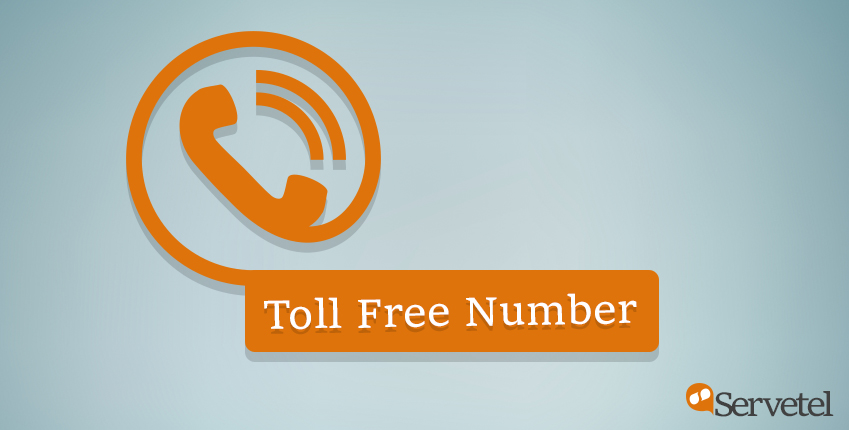The world is no new to the regime of toll-free numbers. Businesses are already using toll free numbers to widen their reach nationally. But the factor which makes toll-free number popular among customers is that toll-free numbers are billed to the destination of the call rather than the origin of the same, i.e., the expense of calls is paid by the owner of the number instead of the caller.
This makes toll-free numbers an indispensable part of a company’s customer services since customers prefer calling a number where they don’t have to bear the expenditure of calling. Moreover, with an auto-receptionist feature of toll free number every caller is greeted by an automated system which walks them through, rapidly solving their simple queries, thereby saving time and effort.
HOW TOLL-FREE NUMBERS CAME INTO EXISTENCE
Toll-free numbers embedded their roots since the era of electro-mechanical call switching which required operator’s participation for every call. However, with time, software programmers made it a fully computerised stored-program-controlled network. Initially, the system of collect calls was established, which required the acceptance of charges at the destination end before the completion of the call.
Later on, this system got evolved to manual toll free systems which involved an operator looking up the corresponding geographic number and reversing the charges before placing the call. Meanwhile, AT&T introduced direct dial system in 1966 which was still based upon the electro-mechanical call switching system but was thoroughly accepted. At the end when the computerised switching system was established, modern direct dial system set its roots and continues to be a success till date.
Nowadays, as a subsequent result of modern direct-dial systems, toll free numbers are collecting immense popularity. As a result, we now have a variety of toll-free numbers at our disposal, each with their own set of plans and policies, satisfying all different kind of requirements. Although the variation based on plans and policies of your toll-free number depends largely upon your toll free service provider, there is a broader spectrum by which toll-free numbers can be categorised.
Types of Toll-Free Numbers
Toll free numbers can be categorize into three basic categories.
Universal International Freephone Number (UIFN)
Companies that have offices in multiple countries, and that are keen on using the same number at all of their locations are the ones likely to use UIFN. UIFN is usually an eleven-digit number and needs registration in at least two countries to be classified as a UIFN.
For a company that is globally present and has substantial market capital, UIFN is quite convenient. These companies prefer to have a single number for all their clients. However, it does require a company to pay a significant one time set up fee and incur the cost of each country they are enlisting their global number in. The cost is proportional to the number of countries one opts for.
However, before opting for a UIFN number, a company should be aware of the below facts.
Firstly, not all countries are involved in the UIFN program; it’s available in roughly 50 countries; hence it covers a lot less market.
Secondly, the cost of service is higher when compared to International Toll-Free Number and Domestic Toll-free Number.
Large enterprises are the ones that usually prefer UIFN; commonly they are software giants, high-end resorts, e-commerce giants et al.
International Toll-Free Number
International Toll-Free Numbers are country-specific toll free numbers; this implies that dialling such numbers from anywhere within the country is cost-free to the caller and charges will be incurred to the called company.
In case a multinational corporation is not willing to opt for UIFN (either due to country-specific restriction or due to billing policy), it is deemed best that they use different international toll-free numbers for different countries.
Using international toll-free numbers, a company gains fidelity in the eyes of its customers. It helps a company to attain national presence and allows them to relocate without changing their numbers.
International toll free may incur add-on charges for calls made to mobile phones and pay phones. Also, one must note that there is some degree of restriction when compared to domestic toll-free numbers.
Domestic Toll-Free Number
These are the list-toppers when it comes to the preference of toll-free numbers. Any domestic company, having offices nationwide, tends to always opt for domestic toll-free numbers. These work much in the same way as the International Toll-Free Numbers but comes with way fewer restrictions and are usually devoid of any add-on charges for calls made to mobile phones or pay phones.
Why Should A Company Opt For Toll-Free Number
Toll-free number provides a company with bundles of possibilities to boost their business. Toll-free number services include features such as IVR (Interactive Voice Response) which acts as the first line of interaction between customer and company. It also saves time and capital by routing calls automatically to different departments when needed.
Who Should Use Toll-Free Number
SMEs, SMBs, in accordance with large enterprises should all consider using Toll-Free services. In particular, any company planning to establish their business at multiple locations should consider using toll-free numbers to understand their customers’ requirements, strengthen their brand image, widen their customer base and create better customer experiences.
Now that you’ve readabout different types of toll free numbers you would be wanting to use one for your own business. Your search for a reliable toll-free number service provider comes to an end with Servetel. Contact us for the best toll free service today at 1800-120-4132.

















